Nepal is well-known for its Himalayan tapestries. The country houses eight of the fourteen tallest mountains in the world, including Mount Everest. And due to this, trekking is an adventure done by thousands of travelers worldwide. With being the home to many highest mountains globally, the country offers several interesting places for trekking adventures. Some of the trek routes are common and popular trek routes, whereas there are lesser-known routes too. The lesser-known routes are off the beaten path, and these paths bring trekkers to the isolated and remote parts of Nepal. These treks offer the joy of getting to enjoy the remoteness, seclusion, and unique cultures hidden amidst the big mountains in solitude. Additionally, as these places are not undergone by many, they have managed to keep their natural beauty intact and offer a marvelous trekking experience.
Those interested in getting lost in Nepal's remote plains and experiencing a traditional way of life will probably find the below listed seven off-the-beaten-path treks in Nepal remarkable. Please go through our rundown list of the seven best off-the-beaten-path trekking journeys in Nepal.
Upper Dolpo Trek
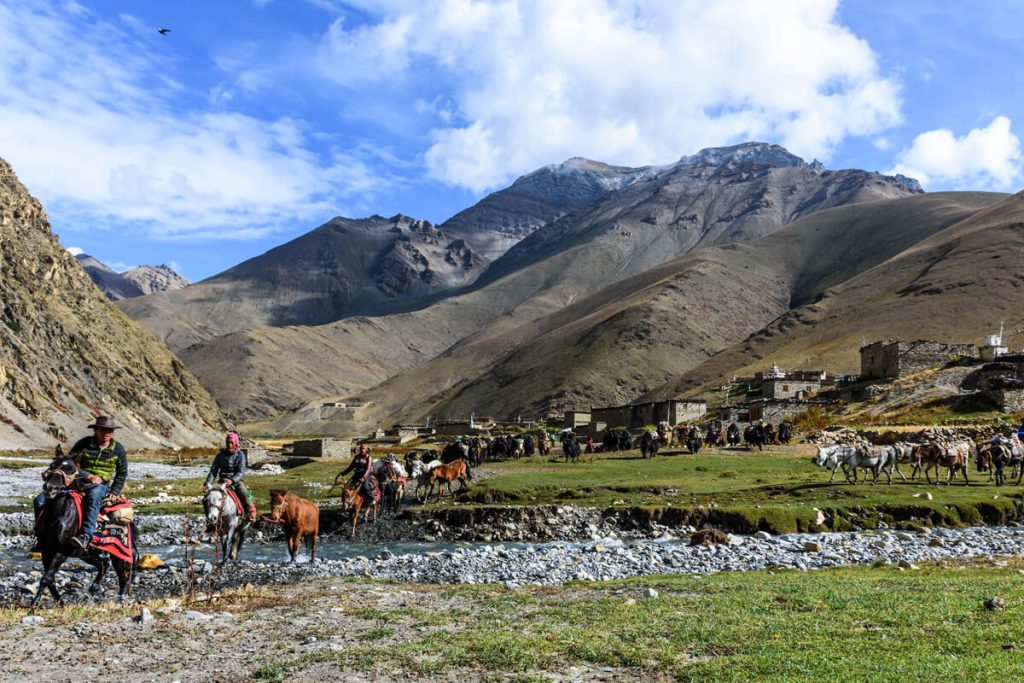
The most notable off-the-beaten-path trek in Nepal is the Upper Dolpo Trek. The journey takes travelers into the very heart of the Dolpo region. It includes natural highlights like the Phoksundo Lake, the Shay Gompa, high mountain passes, and Tibetan culture. Upper Dolpo, a culturally Tibetan town, is located at a high altitude in western Nepal's Dolpo district. Upper Dolpo adheres to Tibetan Buddhism culture since Bön culture and tradition are predominant and best-preserved in this region. Tin its original form, which is enticing for foreigners.
Geographically, it is a part of the Tibetan-Tethys Zone. Upper Dolpo has sedimentation of barren land and arid hills. The Himalayas, including Mount Dhaulagiri, surround it. Because of the Himalayan cloud-barriers, the atmosphere in Upper Dolpo is semi-arid with little rainfall. The area has traditionally been divided into four valleys: the Tsharka ("good growing-place"), the Tarap ("auspicious excellent"), the Panzang ("monk's abode"), and the Nangkhong ("good growing-place") ("innermost place").
Like transhumance in the Alps, the population migrates between villages and high-lying summer pastures, in a lifestyle referred to as samadrok ("farming nomads"). The spiritual center of the region, the Shay Gompa, is also a famous destination that is visited by many travelers for receiving blessings from the monks for a successful journey. Lying at the Crystal Mountain base, the Shay Gompa is visited by pilgrims to perform Kora. Upper Dolpo Trek is a spectacular off-the-beaten-path journey rich in religious sites and incredible landscapes because of its remoteness.
Makalu Base Camp Trek
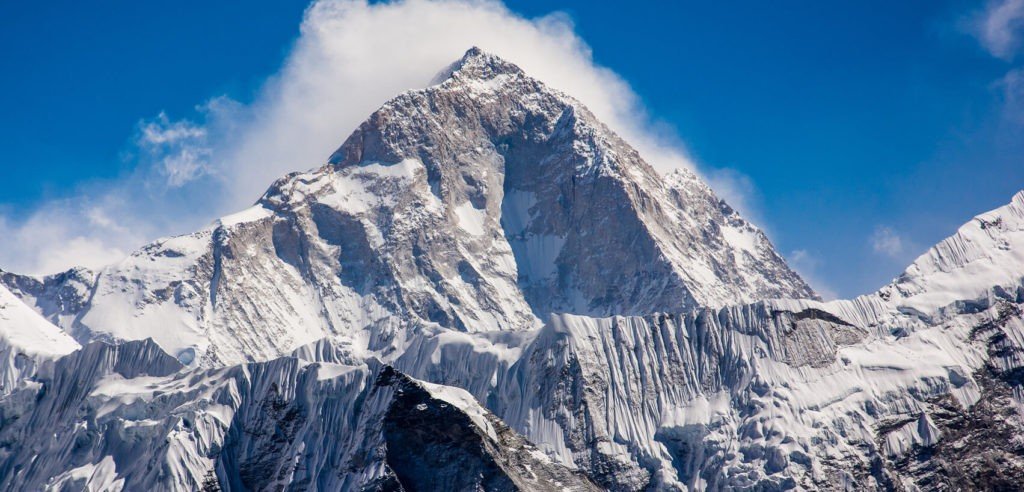
The Makalu Base Camp Trek, a largely unknown trekking expedition, is a beautiful off-the-beaten-paths trekking experience that involves trekking to the base camp of the world's fifth-highest peak. Mount Makalu, which has two subsidiary hills, is part of the stunning Makalu-Barun valley known for its spectacular natural scenery. The trek cruises through the Makalu Barun National Park, where various fauna and flora flourish.
An off-the-beaten-path trek- the trail of this journey is never flat and always goes up or descending. In 1992, the park was established as an eastern extension of the Sagarmatha National Park. Makalu national park is the only protected area globally with an elevation gain of more than 8,000 meters.
The Makalu Base camp trek is a beautiful trekking journey in the Sacred Himalayan landscape. The Arun valley's pristine landscape has remarkable similarities in terms of scenery, and rhododendron flowers add more charm to the trekking trip. The National Park woodlands are home to animals such as the Red Panda, Snow Leopards, Himalayan Wolves, Himalayan Black Bears, and various bird species.
Kanchenjunga Trek
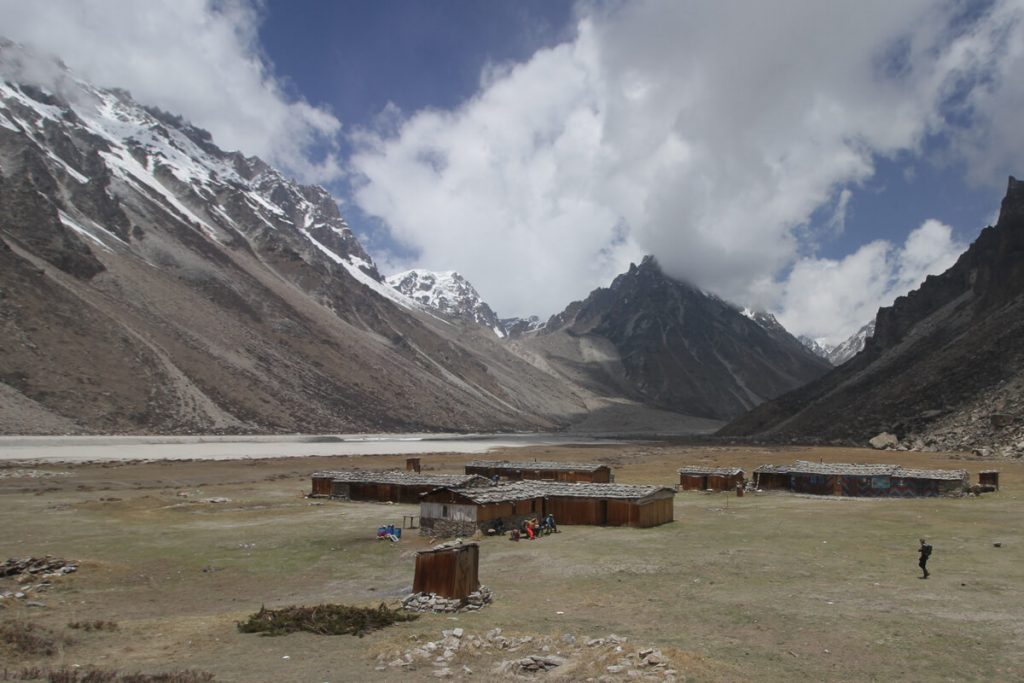
Kanchenjunga Trek is a well-known off-the-beaten-path trek that leads to the north base camp of Kanchenjunga Mountain. The region offers a culturally rich trekking journey as the journey entails passing through rural villages such as Ghunsa, Kampuchean, and Sele le. Rai and Limbu are the prominent ethnic groups residing in these areas. Adding finesse to the journey is the Yulong Glacier. The glacier makes an appurtenance along the trekking trail, including blossoming rhododendron flowers and verdant woodlands and forests.
Mount Kanchenjunga is located in Nepal and Sikkim, India. The Teesta River borders the mountain in the east, the Tamur River in the west, and the Lhonak Chu in the north. It is Nepal's second-highest mountain in the Himalayas. The name Kanchenjunga depicts the Five Treasures of the Snow" for its five peaks. Salt, gold, turquoise, precious stones, and sacred scriptures are among the treasures. Kanchenjunga is also thought to be the home of the goddess Yuma Sammang.
This off-the-beaten-path trekking adventure is veiled in legends and folklore. The area surrounding Kanchenjunga is said to be home to Dzö-nga, also known as "the Kanchenjunga Demon," a form of yeti or rakshasa. Mount Kanchenjunga's inhabitants in both Sikkim and Nepal have told stories for generations about a valley of eternal life hidden on its peaks.
Rara Lake Trek
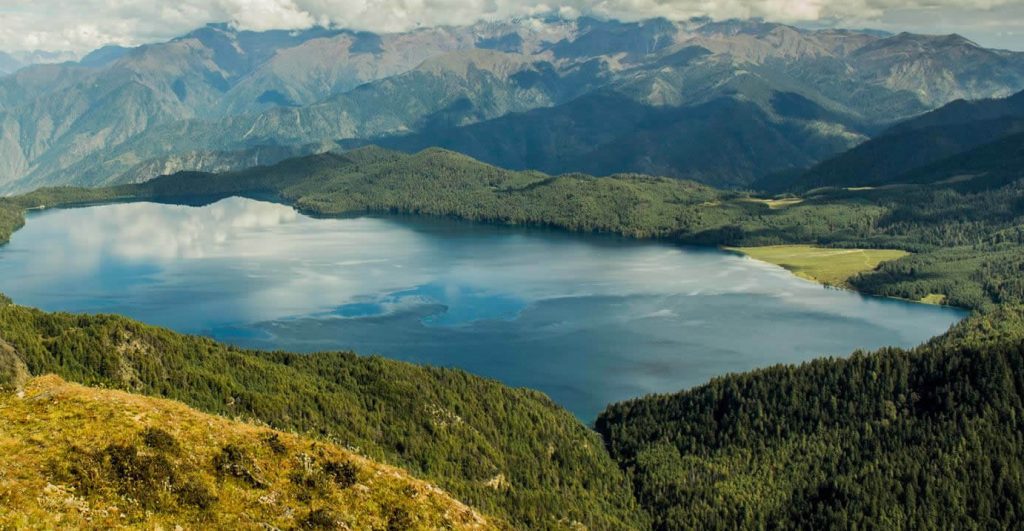
The Rara Lake Trek is an awe-inspiring journey to Nepal's western region. The Rara Lake Trek's highlights include the Rara National Park, the lake itself, and numerous cultural settlements and villages with temples, monasteries, and Gumbas. During the journey, you will see terraced farmlands and lush hills and the sapphire lake of Rara that represents actual Paradise on earth.
Rara Lake is Nepal's largest and deepest freshwater lake in the Himalayas. The trek also involves a visit to Rara National Park. Located in Nepal's Jumla and Mugu districts, the National Park is the smallest national park of Nepal. The park's biodiversity includes 1074 animals, and the animal life includes 51 species of mammals and 214 species of birds.
The Rara Lake Trek, a popular destination for trekkers with a very challenging path in Western Nepal, provides glimmers of culture and scenery different from the usual trekking scenes of Nepal. The lake is a truly majestic piece of nature, surrounded by fir, spruce, and juniper trees. The vision of snow-capped Himalayan peaks adds to the allure. As giant white peaks surround the lake, the lake is also known as "the blue gem of the mountains."
Nar Phu Valley Trek
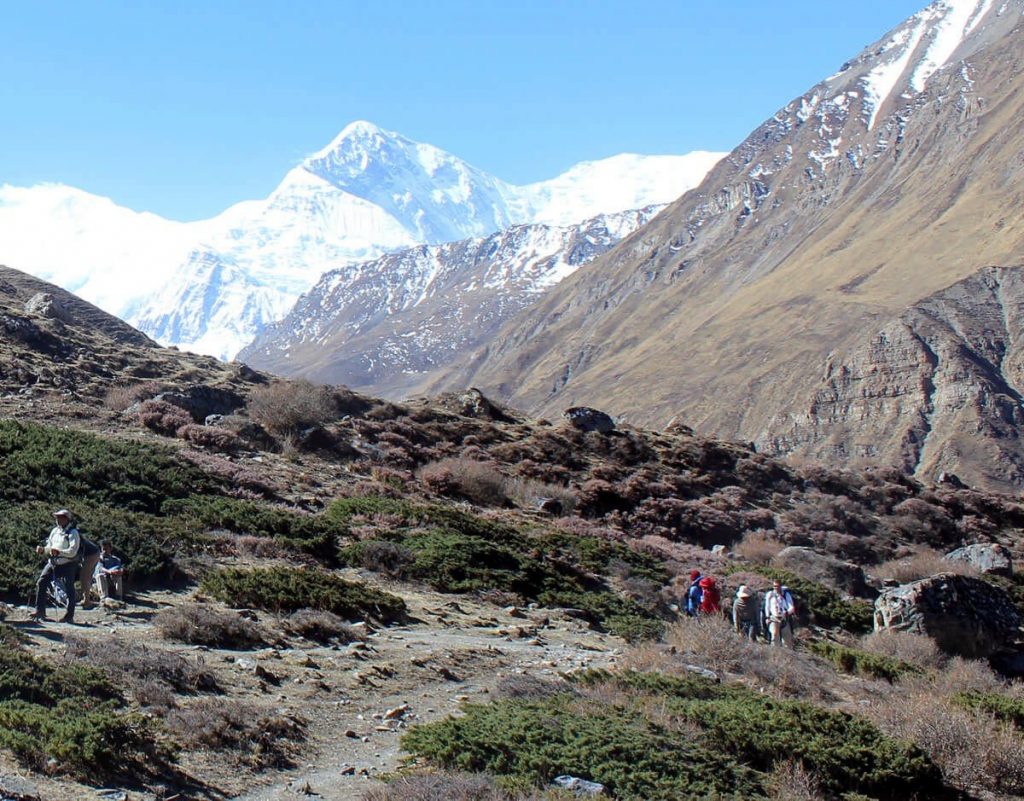
The Nar Phu Valley Trek brings visitors through the secluded and exotic Nar valley in Nepal's Annapurna region. Decorated with incredible alpine scenery, the Nar Phu Valley is rich with Tibetan culture and tranquil environments that have not been disturbed. Many trekkers have not seen the wonders of Nar Phu valley, a relatively newly opened trekking destination. The trek features high peaks and high passes and woodlands, spectacular rock formations, and wide-open pasturelands.
The trek entails passing through routes adorn with Chorten gate and thin Himalayan pine forest to come across ancient Tibetan settlements. The stone houses layered on top of others are one of the attractions of the trek. Ancient Tibetan culture and the Annapurna Himalayan Range view are other significant highlights of the Nar Phu Valley Trek. It's interesting to learn about the cultures of the people who live in the villages. They speak a Sino-Tibetan dialect of Narpa, which has a dialect similarity with the town of Manang.
The two villages of Nar and Phu in the valley, on the other hand, speak a secret language that confuses Gyasumdo and Manang, whose inhabitants would otherwise understand them. It initially parallels the Annapurna Circuit trail until it diverges at the settlement of Koto. The trekking trails also pass-through scenic places such as Yak Kharka and the village of Manang and going through the Thorung La Pass. The journey of Nar Phu Valley concludes with a visit to the Holy temple Muktinath.
Upper Mustang Trek
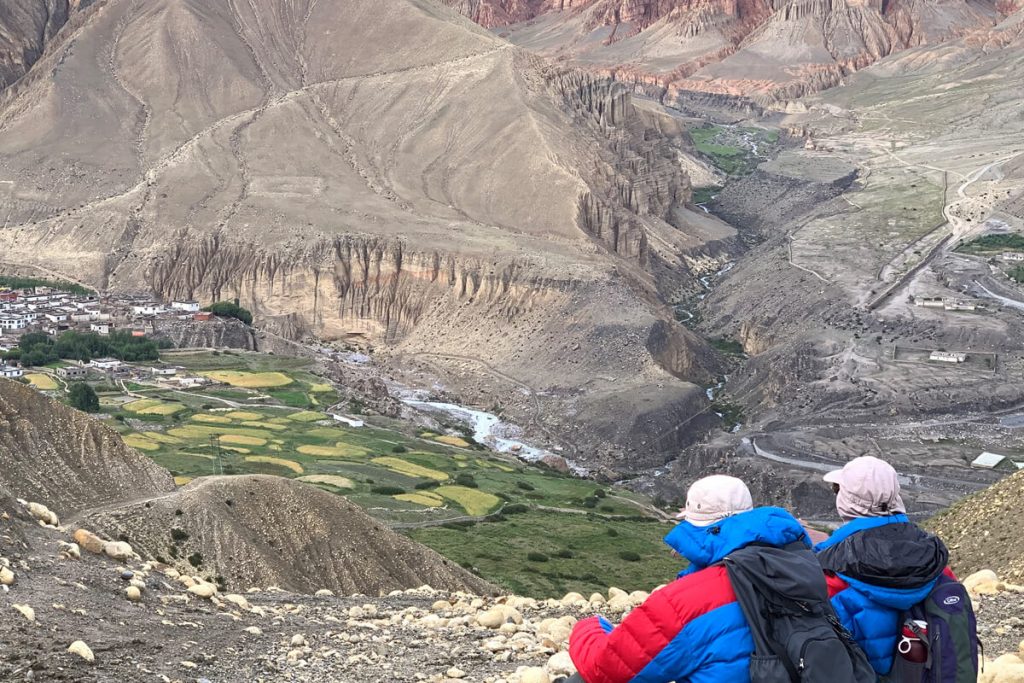
Mustang, or Lo as it is known locally, is an ancient Tibetan kingdom that is now a part of Nepal. The region is hidden in the lap of the Himalayas and protected because of remoteness. The only way in and out of this region for centuries was on horseback only. However, the reality now is different in terms of transportation. Untouched by western civilization and alone in its harsh mountain scenery, a way of life survives in Mustang that is rapidly vanishing in Tibet.
Mustang was once totally off-limits to visitors, with only explorers including David Snellgrove, Guiseppi Tucci, and Michel Piessel. Many travelers' appetites had been whetted by their tales of this wild, forbidden land dominated by a hereditary monarch. It was a land with myths and stories, monks and monasteries, of an ancient civilization but without a mile of the paved path. It was wild, windy, and harsh, and stunningly breathtaking. Mustang was a dream destination for all adventure tourists visiting Nepal. But this Shangri-la was closed to all foreigners, welcoming only the occasional scholar.
That changed in March 1992. Relaxing its strict restrictions, Nepal opened Mustang to organized trekking groups. Today, with an expensive permit fee, visitors can wander across the windswept, treeless mountain country inhabited by the Lo people or Lobas (Lo-pas), close cousins to the Tibetans, step inside crumbling, dimly-lit monasteries in isolated villages, and peer at old, priceless religious paintings. Most houses are flat-roofed, earth-brown, mud-brick structures, crudely plastered and seemingly crumbling. Fierce Tibetan mastiffs, chained to the walls, keep guard over the entrance; sheep horns strung over the doorway ward off evil spirits.
Everest High Passes Trek
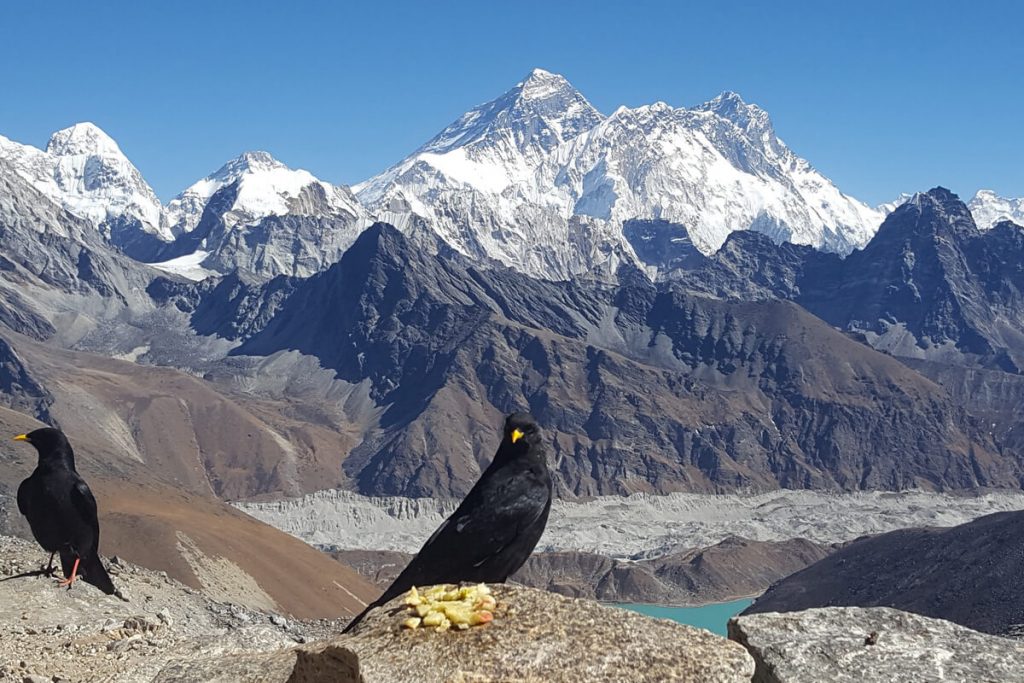
Everest massif boasts scenic views and several routes for trekking adventures. Being home to the highest mountains globally, including Mt. Everest (8898.86m), the region is inevitably a mecca for trekkers, high-altitude climbers, and adventure enthusiasts seeking thrill and beauty. Bursting river systems and gravity-defying rocks face litter the landscape- Nepal truly is a geologic reverie, and the Himalayas are its crown jewel.
This Himalaya Jewel is an incredible destination for anyone looking to test their ability in Everest massif's rugged sites. The region entails three mountain passes that sit at a great height and are testing simultaneously. These three passes are Kongma La, Chola, and Renjo la. And crossing these three passes comes with responsibility and thrill at the same time. Moreover, as this is off the beaten path treks in Nepal, there are not many trekkers undergoing the trail than the main route, i.e., Everest Base Camp Trek. Nevertheless, it is still popular among all the other off-beat treks mentioned above.
In this Everest High Passes Trek, the first pass trekkers will cross Kongma La, which sits at the height of 5535 meters. Trekkers can cross the mountain pass from Bible or Chhukung via Niyang Khola. From the top of the pass, breathtaking views of Makalu, Lhotse, and Island peak are seen. Similarly, the next pass on the trek is Cho La which sits at 5420 meters. While crossing the pass, trekkers have to be wary of rock falling and the danger of crevasses. The path down the mountain pass is slippery; hence more attention is important. From the top, the view of Ama Dablam and Cholaste are visible.
And the last pass on this off-beat journey is the Renjo La pass, which sits at the height of 5360 meters. Trekkers reach Renjo La via Gokyo Ri, enjoying the splendid sights of Gokyo Lakes. The pass is not steep or difficult like the former two passes, but it is still important to the main focus. While crossing the pass, trekkers will witness all of the Everest Himalaya range, Makalu, Tengi Ragi Tau, Rlwaling range, and Gayachung Kang.
All through the trail, the region's remoteness is palpable as the trail is devoid of human settlements. The locals residing in these areas are the teahouse owner who only stays there to provide basic facilities to trekkers. Most locals, during cold weather, descend to lower altitudes. Overall, the Everest Three Passes trek is full of thrilling experiences and remote encounters, unlike regular EBC trek route scenes.
These are some of the off-the-beaten-path treks in Nepal that have to retain their ancient culture and natural beauty intact. Every aspect of the journey is interesting to visitor's eyes as it will take you back to medieval days in modern times. Explore any of these journeys and take a look at a life that is totally different from yours. These destinations will surely give you an experience that shall last for a lifetime.



